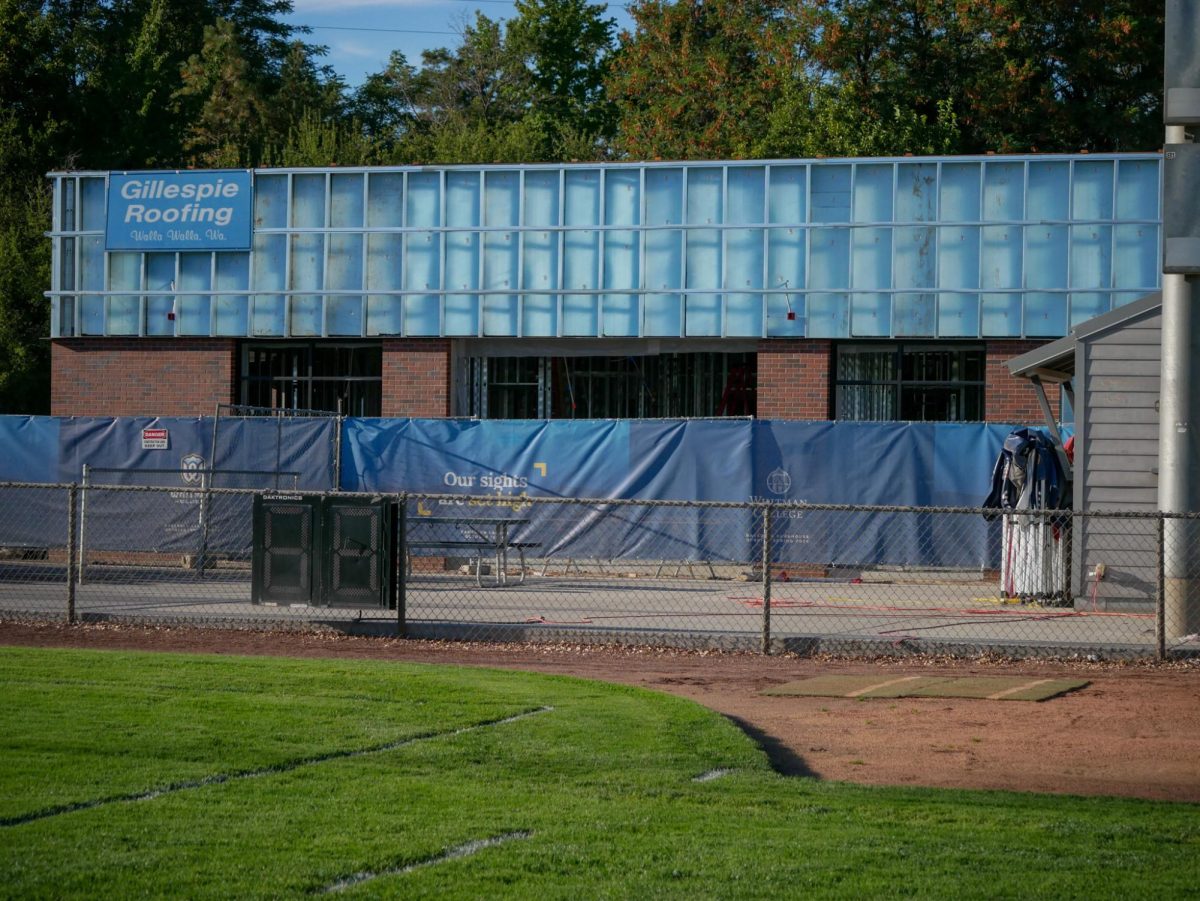There are over 365,000 NCAA student-athletes and just about all of us are going pro in something over than sports.
But are some already more “pro” than others?
The quintessential commercial for the National Collegiate Athletic Association (NCAA) pursues a message that intercollegiate athletics is about the full collegiate experience. Realistically, a small fraction of 18-year-old high school athletes continue on to play collegiately and even more miniscule number earns a chance to play professionally. For the nearly 400,000 college students who get to call themselves student-athletes, they get to continue their childhood athletic dreams for at least four more years.
The question, though, is what does it look like when the NCAA –– a national entity that represents the pride, commitment and respect collegiate athletics stands for –– approves a slew of measures that features an annual stipend to add on top of the billions of dollars allocated to athletic scholarships? The short answer: not good.
Athletic scholarships are only available to Division I and II student-athletes. For small DIII schools like Whitman, athletic scholarships are, and will presumably continue to be, off the table.
The NCAA provides approximately $2 billion annually in awards to over 145,000 student-athletes in the form of either partial or full scholarships. Individual institutions determine the distribution of these scholarships (which student-athletes receive aid), not the NCAA. Averaged out equally, that is almost $14,000 per student-athlete annually, which would go a long way in covering the cost of the average college education (usually between $20,000 and $50,000 for NCAA member institutions). However, the distribution of these scholarships is grossly skewed.
For example, 85 full scholarships are awarded to DI football programs (about 100 players per team), while only 9.9 are allocated for DI men’s soccer (about 30 players per team). While the football scholarships are almost always given in full to players and the remaining 15 or so “walk-on” (are on the team but pay their own way), the soccer scholarships tend to be divvied up into partial scholarships to help as many players as possible.
This type of inequality is prevalent not only between sports, but also between universities. The number of full scholarships allocated to individual athletic programs is based on the institution’s financial standing. Some institutions are not fully financed in some sports, so although the NCAA limit is a certain number, that particular college may not be financially able to field that number of scholarships. Those scholarship funds could be allocated to a number of areas within the athletic department.
Where things begin to get messy is when the “pay for play” movement comes into the conversation. Rules and regulations for scholarships have not changed dramatically in over 40 years. Generally speaking, student-athletes receiving athletic scholarships are not viewed as being “paid” to play collegiate sports, just that they are receiving aid to go to college on the merit of their athletic ability. The pay-for-play movement, however, constitutes the idea that universities are making a profit from persons of amateur status, meaning the student-athletes are making money for the school but are not receiving any direct monetary compensation.
Last November the NCAA Board of Directors made a move that could potentially be a defining moment for the Association. The Board voted to pass a measure that provided DI institutions with a $2,000 stipend to add to their annual scholarship allotments. The dispersal of this stipend is contingent on the acceptance of the athletic conference (SEC, ACC, Pac-12, et cetera), but presumably most conferences will approve the measure and each member institution will receive the stipend.
In late October, NCAA president Mark Emmert (formerly of the University of Washington) backed a proposal by the NCAA to increase grants (i.e. scholarships) given to student-athletes in an attempt “‘to more closely approach’ the full costs of attending college, beyond the athletic scholarships given for tuition, fees, room, board and books.”
The stipend is only meant to “close the gap” between athletic scholarships and the “full cost of attendance” including miscellaneous expenses accumulated by student-athletes because of the extra travel, according to Emmert.
“‘I know there’s a lot of debate out there for pay for play, but that’s not even open for discussion,'” said Emmert to ESPN.com in October 2011. “‘It’s so antithetical to what college athletics is.'”
Board members compromised on the amount of the stipend. The Board agreed on $2,000 because it was an amount they felt all schools would be able to afford.
Irony? I think so.
People who argue in favor of monetary compensation for student-athletes point to the fact that many student-athletes are members of teams that “generate large amounts of money for the institution.” The chance of a school actually making a profit from intercollegiate athletics, however, is very slim.
Forget for a moment the fact that football and men’s basketball –– the “marquee sports” ––are only two of the combined 39 intercollegiate varsity sports offered by the NCAA (19 for men and 20 for women). Forget that intercollegiate athletic programs are not based solely on sports like football and basketball that bring in huge television and broadcast deals.
Looking only at football and men’s basketball, here is how they play out on average financially: 30 percent of DI football programs yield revenue for the school after expenses are paid in full. Only 26 percent of men’s basketball programs do the same.
The NCAA tries to point to overall revenue as an explanation for approving things like this stipend and increasing the amount of money handed out while its schools lose money every year. Broadcast deals and concession sales, however, can only do so much.
What should the NCAA take away from the reaction to its decisions, especially given all the controversy embedded in collegiate athletics in recent years like at USC or Ohio State? If less than 30 percent of the marquee sports are yielding a profit for a school while the rest of the programs have a greater expense cost than incoming revenue, is adding money for allocation really the best idea?
If it were me, I would say the NCAA should recognize the severe inequality already present amongst its intercollegiate programs. Furthermore, if the NCAA wants to avoid further encouraging ideas like it supports “pay for play,” giving student-athletes more money is probably not the way to go. All the recent controversy surrounding iconic football programs makes me think the NCAA would want to steer clear of anything that looks like it is trying to turn college kids pro before their time.
Not everyone is fortunate enough to be a collegiate athlete and even fewer receive aid to continue playing the sport they love. By NCAA rule, student-athletes may not receive athletic scholarships if they are not of amateur status. Athletes are deemed “professional” if they have made money by playing a sport, such as endorsement deals in gymnastics.
Why subject 18 to 21-year-olds to questions about their status as amateur athletes? It’s hard enough going to college without legal teams breathing down your neck.
There are over 365,000 NCAA student-athletes and just about all of us are going pro in something over than sports. The truth of this statement remains yet to be seen.
Quotes and statistics provided by the NCAA and ESPN.com. For more information on athletic scholarships and new initiatives, visit www.ncaa.org or www.espn.com.





